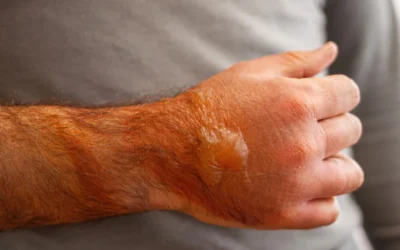Introduction
Imagine buying a product with the expectation that it will make your life easier, safer, or more enjoyable, only to have it cause you harm instead. Whether it’s a kitchen appliance that malfunctions and burns you, a car part that fails and leads to an accident, or a children’s toy with hidden dangers, defective products can cause unexpected injuries that disrupt lives. If this has happened to you or someone you care about, you’re not alone—and you don’t have to face the challenges ahead without support.
Filing a claim for injuries caused by a defective product can feel overwhelming, especially when you’re already dealing with physical pain, emotional distress, or mounting medical bills. Understanding your rights and the steps you need to take is crucial to holding the responsible parties accountable and securing the compensation you may deserve.
At Hurt Aid, we know how daunting this process can seem. That’s why we’re here to guide you, step by step, and connect you with trusted legal professionals who can help. Whether you’re a victim of a defective product or researching for a loved one, this article will provide clear, actionable information to empower you as you navigate the next steps.
Understanding Product Liability
When it comes to injuries caused by defective products, the legal concept of product liability plays a key role. Product liability laws are designed to protect consumers by holding manufacturers, distributors, and retailers accountable for the safety of the products they put on the market. If a product causes harm due to a defect, these parties may be legally responsible for the resulting injuries.
Types of Defects
There are three main types of product defects that can lead to liability:
1. Manufacturing Defects
These occur when a product is flawed due to errors in the production process. For example, a batch of pressure cookers may be assembled with faulty seals, causing dangerous malfunctions.
2. Design Defects
These are inherent flaws in a product’s design that make it unsafe even when manufactured correctly. For instance, a ladder designed without proper stability features poses a risk of injury to anyone who uses it as intended.
3. Failure to Warn (Marketing Defects)
These defects arise when a product lacks sufficient instructions or warnings about potential risks. For example, if a cleaning chemical is sold without a clear warning about its toxic fumes, it could result in serious harm to users.
Examples of Defective Products
Defective products can appear in nearly every category of consumer goods. Some common examples include:
- Automobiles: Airbags that fail to deploy or brakes that stop working.
- Electronics: Overheating devices that cause burns or fires.
- Medical Devices: Faulty implants or equipment leading to complications.
- Children’s Products: Toys with small parts that pose choking hazards or cribs with structural weaknesses.
- Food and Beverages: Contaminated products causing illness.
Recognizing the type of defect that caused your injury is an important first step in building your case. Each category may involve different forms of evidence and legal strategies to prove liability.
By understanding the basics of product liability, you’ll be better equipped to take the right steps toward justice and recovery.
Recognizing Injuries Caused by Defective Products
If you’ve been injured by a product, determining whether the injury was caused by a defect is a critical step. Many injuries initially seem like accidents, but they could be linked to flaws in the product’s design, manufacturing, or marketing. Recognizing this connection early on can strengthen your case and help you take the necessary steps toward compensation.
Signs Your Injury May Be Linked to a Defective Product
To determine if your injury is the result of a defective product, consider the following:
- Unexpected Malfunctions: Did the product break, fail, or perform in an unexpected way during normal use? For example, a coffee maker that explodes when turned on indicates a potential defect.
- Lack of Warnings or Instructions: Were you unaware of a specific risk because the product lacked clear warnings or adequate instructions? For instance, if a medication didn’t warn about severe side effects, this might qualify as a failure to warn.
- Other Reported Issues: Has the product been recalled or linked to similar injuries? Researching recalls or safety reports can reveal if others have experienced the same issue.
Documenting the Incident
The evidence you gather after a product-related injury is essential to building a strong case. Here’s what you should do:
- Retain the Product: If possible, keep the defective product in its current condition. Do not attempt to repair or alter it. This serves as crucial evidence in proving the defect.
- Preserve Packaging and Documentation: Hold onto the product’s box, user manual, receipts, and any warranty information. These items help establish when and where the product was purchased.
- Photograph the Damage: Take clear photos of the defective product, your injuries, and any surrounding damage (e.g., property damage caused by the product).
- Document the Injury: Write down the details of the incident, including what you were doing, how the product malfunctioned, and the immediate consequences.
The Importance of Medical Attention
Seeking medical care immediately after an injury is essential—not just for your health but also for your legal claim. A healthcare professional’s documentation of your injuries can establish a direct link between the product and the harm you suffered. Be sure to:
- Explain how the injury occurred to your doctor.
- Obtain copies of your medical records, including any diagnoses, treatments, and medical bills.
By recognizing the connection between your injury and a defective product, you lay the groundwork for pursuing a claim.
Steps to Take After a Product-Related Injury
After suffering an injury caused by a defective product, taking prompt and strategic action is vital. These steps not only protect your well-being but also strengthen your ability to pursue a claim for compensation.
1. Prioritize Your Safety and Health
Your immediate focus should always be on your safety and recovery. If the injury is severe, seek emergency medical attention right away. If it’s less urgent but still concerning, schedule an appointment with a healthcare provider to evaluate the extent of your injuries.
Medical records play a crucial role in linking the injury to the defective product, so ensure your doctor documents how the injury occurred. For example, you might explain, “I was burned when my blender unexpectedly caught fire.”
2. Preserve Evidence
Retaining evidence is one of the most important steps in building a strong product liability case. This includes:
- The Product: Keep the defective product in its current condition. Do not discard or attempt to repair it.
- Packaging and Documentation: Save the product’s original packaging, instructions, and any purchase receipts. These items can help establish when and where the product was bought.
- Photographic Evidence: Take detailed photos of the product, your injuries, and any damage it caused (e.g., a fire or structural damage).
3. Document the Incident
Write a detailed account of what happened, while the details are still fresh in your memory. Include information such as:
- The date and time of the incident.
- The specific circumstances leading up to the injury.
- How the product malfunctioned or failed.
- Any immediate actions you took afterward.
This written account will serve as valuable evidence and can be shared with your attorney later.
4. Research the Product
Check whether the product has been recalled or if similar incidents have been reported by other consumers. Government agencies like the U.S. Consumer Product Safety Commission (CPSC) maintain databases of product recalls and safety alerts. If a recall exists, it can help demonstrate that the manufacturer was aware of the defect.
5. Avoid Direct Communication with Manufacturers
After the injury, the product’s manufacturer or their insurance company may reach out to you. They might ask you to provide a statement or sign an agreement. It’s important to avoid direct communication without legal guidance. Anything you say or sign could jeopardize your claim.
6. Contact an Experienced Attorney
Navigating the complexities of a product liability claim can be challenging. An attorney specializing in this area can:
- Evaluate your case and determine if the defect caused your injury.
- Identify who may be held responsible (e.g., manufacturer, distributor, retailer).
- Handle negotiations with insurance companies and legal representatives.
Legal professionals bring expertise and resources to build a strong case, such as working with expert witnesses to analyze the product or reconstruct the incident.
7. Act Quickly to Avoid Missing Deadlines
Each state has a statute of limitations that sets a deadline for filing a product liability claim. This timeframe can vary depending on your location and the specifics of your case. Acting promptly ensures you don’t miss the opportunity to seek compensation. An attorney can help clarify these deadlines and guide you through the process.
By following these steps, you’ll be better prepared to pursue justice and hold the responsible parties accountable.
Filing a Product Liability Claim
Filing a claim for injuries caused by a defective product is a structured process that involves gathering evidence, proving liability, and pursuing compensation. Understanding how this process works can help you feel more confident and prepared.
1. Determine Liability
One of the first steps in filing a product liability claim is identifying who is responsible for the defect that caused your injury. Liability may rest with one or more of the following parties:
- Manufacturer: The company that designed or produced the defective product.
- Distributor: The entity that transported or supplied the product.
- Retailer: The store or online platform that sold the product to you.
Each of these parties has a responsibility to ensure the products they handle are safe for consumers. A defect in design, manufacturing, or marketing at any stage of the supply chain could result in liability.
2. Understand the Key Elements of a Product Liability Case
For your claim to succeed, you must prove the following:
- The Product Was Defective: Provide evidence that a defect existed in the product’s design, manufacturing, or marketing.
- The Defect Caused Your Injury: Show that the defect directly led to your injury, rather than user error or misuse.
- You Were Using the Product as Intended: Demonstrate that you were following the product’s intended use and instructions at the time of the injury.
An attorney can help establish these elements by reviewing the product, consulting experts, and compiling evidence.
3. File a Claim
Once liability is determined and evidence is gathered, the next step is formally filing a claim. This typically involves the following actions:
- Notify the Responsible Party: Your attorney will send a formal notice to the manufacturer, distributor, or retailer, detailing your claim.
- Initiate a Legal Filing: If negotiations fail, your attorney may file a lawsuit in civil court to seek compensation.
- Present Evidence: During the legal process, your evidence—such as the defective product, medical records, and expert testimony—will play a key role in proving your case.
4. Negotiate a Settlement
In many cases, the responsible parties or their insurance companies may offer a settlement to avoid a lengthy court battle. A fair settlement should cover:
- Medical Expenses: Costs of treatment, therapy, and ongoing care.
- Lost Wages: Income lost due to time away from work.
- Pain and Suffering: Compensation for physical pain and emotional distress.
Your attorney will handle negotiations to ensure the offer reflects the full extent of your damages.
5. Prepare for Trial (If Necessary)
If a settlement cannot be reached, your case may proceed to trial. During the trial, both sides will present evidence, and a judge or jury will decide whether the defendant is liable and what compensation you should receive.
6. Keep Deadlines in Mind
Filing deadlines (statutes of limitations) vary depending on the type of claim and the state where the injury occurred. Missing these deadlines can result in losing your right to seek compensation. An attorney will ensure your case is filed within the required timeframe.
Filing a product liability claim can be complex, but understanding these steps helps set clear expectations for the process.
Common Challenges in Product Liability Cases
While filing a claim for injuries caused by a defective product can be an empowering step toward justice, it’s not without its challenges. Understanding the potential obstacles can help you navigate them effectively and strengthen your case.
1. Proving the Product Was Defective
One of the most significant challenges is proving that the product was defective and that the defect caused your injury. This can involve:
- Technical Complexity: Demonstrating a design or manufacturing defect often requires expert testimony from engineers or industry specialists who can analyze the product.
- Preservation of Evidence: If the product has been altered, discarded, or repaired, it may be harder to prove the defect existed at the time of the injury.
How to Overcome It: Preserve the product in its original condition and work with your attorney to secure expert analysis.
2. Establishing a Direct Link Between the Defect and the Injury
Another challenge is showing that the defect was the direct cause of your injury. For example, if you were using a ladder with a structural flaw, the manufacturer may argue that improper use—rather than the defect—led to the accident.
How to Overcome It: Collect detailed evidence, such as photos of the defect and witness statements, and ensure your medical records document how the injury occurred.
3. Facing Opposition from Manufacturers and Insurance Companies
Manufacturers and their insurers often have legal teams dedicated to minimizing their liability. They may:
- Deny the existence of a defect.
- Claim the product was misused.
- Offer a low settlement to avoid further legal action.
How to Overcome It: An experienced attorney can counter these tactics, negotiate on your behalf, and ensure your rights are protected.
4. Dealing with Recall Complications
If the product has been recalled, it may indicate that the manufacturer acknowledges the defect. However, recalls can complicate claims if the manufacturer argues that adequate warnings or remedies were provided to prevent harm.
How to Overcome It: Document whether you received any recall notices and how the product was used before the injury.
5. Statute of Limitations
Every state imposes a statute of limitations that sets a deadline for filing a claim. Missing this deadline could mean forfeiting your right to compensation, regardless of the strength of your case.
How to Overcome It: Act quickly after the injury and consult an attorney as soon as possible to ensure your claim is filed on time.
6. Balancing the Burden of Proof
As the injured party, the burden of proof falls on you. This means you must provide compelling evidence that the product was defective, the defect caused your injury, and you suffered measurable damages as a result.
How to Overcome It: Work with an attorney who has experience in product liability cases and access to resources, such as expert witnesses and investigative teams.
By being aware of these challenges and taking proactive steps, you can strengthen your case and improve your chances of success.
Compensation in Product Liability Cases
When you’ve been injured by a defective product, the financial and emotional toll can be significant. Filing a product liability claim not only holds the responsible parties accountable but also helps you recover compensation to address your damages. Understanding the types of compensation you may be entitled to can clarify what’s at stake in your case.
1. Medical Expenses
One of the primary forms of compensation is for medical costs related to your injury. This includes:
- Emergency room visits.
- Surgeries and procedures.
- Medications and medical devices.
- Physical therapy and rehabilitation.
- Long-term care for severe injuries.
It’s important to keep all medical bills, receipts, and records to document these expenses.
2. Lost Wages and Earning Potential
If your injury caused you to miss work, you might recover compensation for lost wages. Additionally, if the injury affects your ability to work in the future—either temporarily or permanently—you may be entitled to damages for diminished earning potential.
For example, if a defective power tool caused a hand injury that prevents you from returning to your job as a carpenter, this loss of income can be factored into your claim.
3. Pain and Suffering
Compensation for pain and suffering addresses the physical and emotional impact of your injury. This can include:
- Chronic pain caused by the injury.
- Emotional distress, such as anxiety or depression.
- Loss of enjoyment of life due to physical limitations.
Calculating pain and suffering damages can be complex, as they are not tied to direct financial costs. Attorneys often work with experts to determine an appropriate value.
4. Property Damage
If the defective product caused damage to your property—for example, a fire caused by a faulty appliance—you may recover compensation for repairs or replacement costs.
5. Punitive Damages
In cases where the manufacturer’s negligence was particularly egregious, punitive damages may be awarded. These are intended to punish the wrongdoer and deter similar behavior in the future. While less common, punitive damages can significantly increase the overall compensation in a case.
6. Wrongful Death Damages
If a defective product results in a fatality, family members may pursue a wrongful death claim. Compensation in these cases may cover:
- Funeral and burial expenses.
- Loss of financial support.
- Loss of companionship and emotional support.
Factors That Affect Compensation
Several factors can influence the amount of compensation you may receive, including:
- The severity of your injury and its impact on your life.
- The strength of the evidence proving the defect and liability.
- The willingness of the responsible parties to negotiate a fair settlement.
An experienced attorney will work to ensure your compensation reflects the full extent of your damages.
Seeking compensation in a product liability case is about more than financial recovery—it’s about securing the resources you need to heal and move forward.
Conclusion
Suffering an injury due to a defective product can be a life-altering experience, leaving you with medical bills, lost income, and emotional distress. Navigating the process of filing a claim might feel overwhelming, but it’s an essential step toward holding the responsible parties accountable and securing the compensation you need to rebuild your life.
Taking immediate action—seeking medical attention, preserving evidence, and consulting with a legal professional—can make a significant difference in the outcome of your case. Remember, the burden of proof lies with you, so documenting every detail and acting quickly is key to building a strong claim.
At Hurt Aid, we understand how challenging this journey can be, whether you’re the one directly affected or supporting a loved one through this process. That’s why we’re here to help. By connecting you with trusted legal professionals and providing the resources you need, we aim to make the path to justice as clear and supportive as possible.
If you or someone you know has been injured by a defective product, don’t wait to take action. Reach out to Hurt Aid today to begin your journey toward recovery, accountability, and peace of mind. You don’t have to face this alone—help is just a click away.





